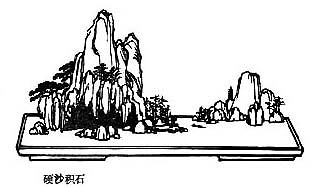To ensure that your whole host may withstand the brunt of the enemy's attack and remain unshaken - this is effected by maneuvers direct and indirect.1
That the impact of your army may be like a grindstone dashed against an egg - this is effected by the science of weak points and strong.
1. We now come to one of the most interesting parts of Sun Tzu's treatise, the discussion of the CHENG and the CH`I." As it is by no means easy to grasp the full significance of these two terms, or to render them consistently by good English equivalents; it may be as well to tabulate some of the commentators' remarks on the subject before proceeding further. Li Ch`uan: "Facing the enemy is CHENG, making lateral diversion is CH`I. Chia Lin: "In presence of the enemy, your troops should be arrayed in normal fashion, but in order to secure victory abnormal maneuvers must be employed." Mei Yao-ch`en: "CH`I is active, CHENG is passive; passivity means waiting for an opportunity, activity beings the victory itself." Ho Shih: "We must cause the enemy to regard our straightforward attack as one that is secretly designed, and vice versa; thus CHENG may also be CH`I, and CH`I may also be CHENG." He instances the famous exploit of Han Hsin, who when marching ostensibly against Lin- chin (now Chao-i in Shensi), suddenly threw a large force across the Yellow River in wooden tubs, utterly disconcerting his opponent. [Ch`ien Han Shu, ch. 3.] Here, we are told, the march on Lin-chin was CHENG, and the surprise maneuver was CH`I." Chang Yu gives the following summary of opinions on the words: "Military writers do not agree with regard to the meaning of CH`I and CHENG. Wei Liao Tzu [4th cent. B.C.] says: 'Direct warfare favors frontal attacks, indirect warfare attacks from the rear.' Ts`ao Kung says: 'Going straight out to join battle is a direct operation; appearing on the enemy's rear is an indirect maneuver.' Li Wei-kung [6th and 7th cent. A.D.] says: 'In war, to march straight ahead is CHENG; turning movements, on the other hand, are CH`I.' These writers simply regard CHENG as CHENG, and CH`I as CH`I; they do not note that the two are mutually interchangeable and run into each other like the two sides of a circle [see infra, ss. 11]. A comment on the T`ang Emperor T`ai Tsung goes to the root of the matter: 'A CH`I maneuver may be CHENG, if we make the enemy look upon it as CHENG; then our real attack will be CH`I, and vice versa. The whole secret lies in confusing the enemy, so that he cannot fathom our real intent.'" To put it perhaps a little more clearly: any attack or other operation is CHENG, on which the enemy has had his attention fixed; whereas that is CH`I," which takes him by surprise or comes from an unexpected quarter. If the enemy perceives a movement which is meant to be CH`I," it immediately becomes CHENG."
Giles V.3,4.
Les troupes que vous ferez avancer contre l'ennemi doivent être comme des pierres que vous lanceriez contre des œufs. De vous à l'ennemi, il ne doit y avoir d'autre différence que celle du fort au faible, du vide au plein. La certitude de subir l'attaque de l'ennemi sans subir une défaite est fonction de la combinaison entre l'utilisation directe et indirecte des forces.
Amiot

 – The Art of War
– The Art of War 
